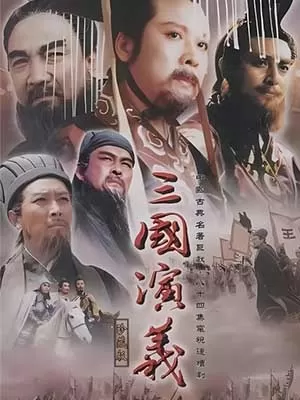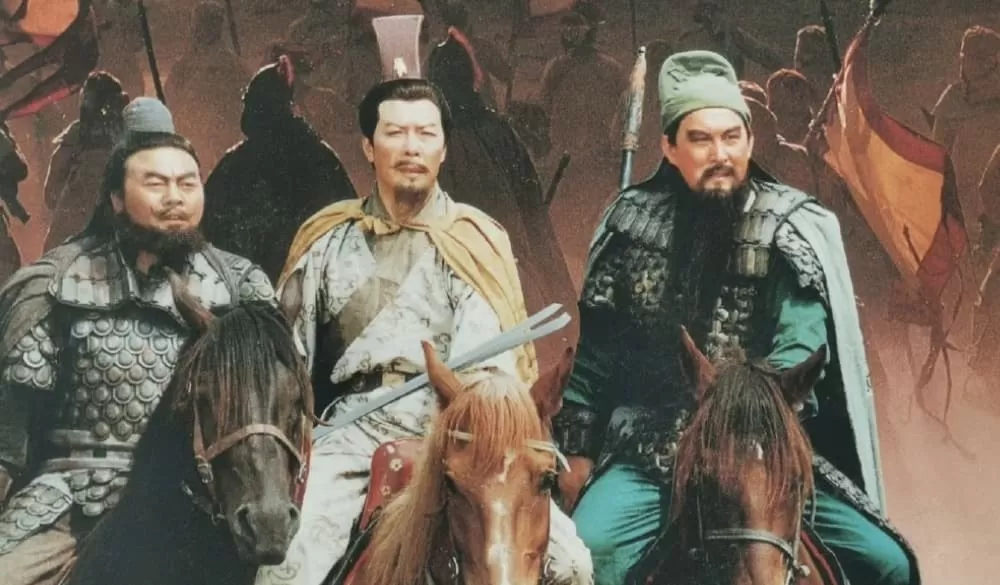
Romance of the Three Kingdoms (also known as The Romance of the Three Kingdoms, The Popular Romance of the Three Kingdoms, and The First Book of Genius) is a chapter-based historical novel written by Luo Guanzhong during the late Yuan and early Ming dynasties. Drawing from Chen Shou’s Records of the Three Kingdoms, Pei Songzhi’s annotations, and folk tales and legends about the Three Kingdoms period, the novel is a literary reimagining of history. Alongside Journey to the West, Water Margin, and Dream of the Red Chamber, it is recognized as one of the Four Great Classical Novels of Chinese literature.
Luo Guanzhong crafted Romance of the Three Kingdoms by synthesizing Song and Yuan dynasty storytelling scripts, operas, and anecdotes about the Three Kingdoms, while also referencing Chen Shou’s Records of the Three Kingdoms and Pei Songzhi’s annotations.
The novel is broadly divided into five major sections: the Yellow Turban Rebellion, the Tyranny of Dong Zhuo, the Struggle Among Warlords, the Tripartite Division of the Three Kingdoms, and the Unification under the Jin Dynasty. Spanning nearly a century from the late Eastern Han to the early Western Jin, the work focuses on warfare, depicting the chaotic battles among warlords in the late Eastern Han and the political and military conflicts between the states of Wei, Shu, and Wu. It culminates in Sima Yan’s unification of the Three Kingdoms and the establishment of the Jin Dynasty. The novel reflects the social struggles and shifting contradictions of the era, encapsulates its historical upheavals, and immortalizes a cast of legendary heroes.
After its completion, multiple editions circulated, including the Jiajing Renwu edition. During the late Ming and early Qing dynasties, Mao Zonggang revised the novel by reorganizing chapters, refining the language, and updating poems, resulting in the most polished and widely circulated version.
Romance of the Three Kingdoms is the first chapter-based novel in Chinese literary history, a pioneering work of historical fiction, and a monumental humanistic novel. By the Ming and Qing dynasties, it was hailed as the "First Book of Genius." Since its publication, countless adaptations and artistic works have drawn inspiration from it. The novel’s immense influence has even led its artistic interpretations to overshadow historical facts.
In the first year of the Jiajing era (1522), The Popular Romance of the Three Kingdoms was published, bearing the inscription: "Historical Records by Chen Shou, Marquis of Pingyang of the Jin Dynasty, Compiled by Luo Guanzhong of Later Generations." This became the foundational text for subsequent editions. The titles The Romance of the Three Kingdoms and Romance of the Three Kingdoms were not originally used by Luo Guanzhong but emerged during the novel’s circulation. The former appeared in Zhou Hongzu’s Ancient and Modern Books during the Ming dynasty, while the latter was coined by Mao Zonggang in his Method for Reading the Records of the Three Kingdoms during the Qing dynasty. Each title reflects distinct aspects of the novel’s character.

Liu Bei, Guan Yu, and Zhang Fei are three brothers riding horses together
After the Qing dynasty, Mao Zonggang’s annotated edition often used titles like The First of the Four Great Masterpieces or The First Book of Genius. Over time, the title Romance of the Three Kingdoms gained prominence. Although not widely adopted in the Qing dynasty, it became standardized after the People’s Literature Publishing House released the most influential edition of Chinese classical novels following the establishment of the People’s Republic of China.
The earliest historical source for the Three Kingdoms period is Records of the Three Kingdoms by Chen Shou, a Western Jin historian. However, as a biographical history, it provides only brief outlines of events. Pei Songzhi, a scholar of the Southern Song, enriched the text with annotations, adding anecdotes and enhancing its narrative appeal. By the mid-Tang dynasty, stories about figures like Zhuge Liang had become widespread, as noted by historian Liu Zhiji in Generalities on Historiography. The late Tang poet Li Shangyin referenced popular tales of Zhang Fei and Deng Ai in his Poem to My Arrogant Son, indicating that Three Kingdoms lore was common knowledge by then. During the Song dynasty, storytellers and performers further popularized these tales, often reflecting a "pro-Shu, anti-Cao" bias.
In the Jin and Yuan dynasties, Three Kingdoms stories were adapted into numerous plays. Yuan theater alone featured nearly thirty works based on the era, as recorded in Register of Ghosts and Catalog of Great Harmony. The All Illustrated Pinghua of the Three Kingdoms, printed during the Zhizhi era (1321–1323), is the earliest surviving pinghua (oral storytelling script) dedicated to the Three Kingdoms. Though crude in language and riddled with historical inaccuracies, it laid the groundwork for Luo Guanzhong’s novel. From the late Tang to the Yuan dynasty, these evolving folk tales provided ample material for Romance of the Three Kingdoms.
In the late Yuan and early Ming dynasties, Luo Guanzhong synthesized Chen Shou’s Records of the Three Kingdoms, Pei Songzhi’s annotations, and folk traditions to create Romance of the Three Kingdoms. The earliest surviving edition, the Jiajing edition (1522), attributes the work to "Luo Ben Guanzhong," establishing Luo’s authorship. During the early Qing dynasty, Mao Lun and Mao Zonggang revised and annotated the Ming-era Popular Romance of the Three Kingdoms. Their edits emphasized Shu Han’s legitimacy, tightened the narrative, and improved readability, making their edition the dominant version.
Like other chapter-based novels shaped by cumulative contributions, Romance of the Three Kingdoms’ authorship remains debated. While Luo Guanzhong is traditionally credited, some Ming and Qing scholars proposed Wang Shifu as the author, though this claim lacks evidence. Since the 1980s, academic circles have contested Luo’s authorship. The novel’s exact composition date is unclear, but it is understood as a collective work shaped by generations of storytellers and writers. Even if a final editor existed, they were but one contributor among many. Current evidence suggests the novel gained widespread influence from the mid-Ming onward.
The novel excels in its portrayal of military strategy, political intrigue, and character development. It masterfully depicts distinct battles—such as Guandu, Red Cliffs, and Yiling—emphasizing tactics and strategy over brute force. Subplots, alliances, and rivalries (e.g., Sun-Liu cooperation, Zhuge Liang vs. Zhou Yu) add depth and pacing. Characters are defined through their actions and environments: Cao Cao’s cunning, Zhang Fei’s bluntness, Zhuge Liang’s wisdom, and Guan Yu’s valor. Iconic episodes like "Guan Yu Slays Hua Xiong with Warm Wine," "Zhang Fei’s Roar at Changban Bridge," and "Zhuge Liang’s Empty Fort Strategy" remain legendary.
Prone to Misinterpretation: The novel blends fact and fiction (roughly 70% fact, 30% invention), leading readers to mistake fictional elements for reality.
Exaggerated Portrayals: Heroes are depicted as flawless, villains as irredeemable.
Inconsistent Themes: The author’s intent sometimes clashes with execution. For example, Cao Cao’s supposed treachery often reads as shrewdness, while Zhuge Liang’s wisdom borders on cunning.
The Mao Zonggang edition, while the most refined version, remains a "powerful popular history" rather than a literary masterpiece. Nevertheless, Romance of the Three Kingdoms stands as an exceptional work of historical storytelling.
Provides The Most Comprehensive English Versions Of Chinese Classical Novels And Classic Books Online Reading.
Copyright © 2025 Chinese-Novels.com All Rights Reserved
